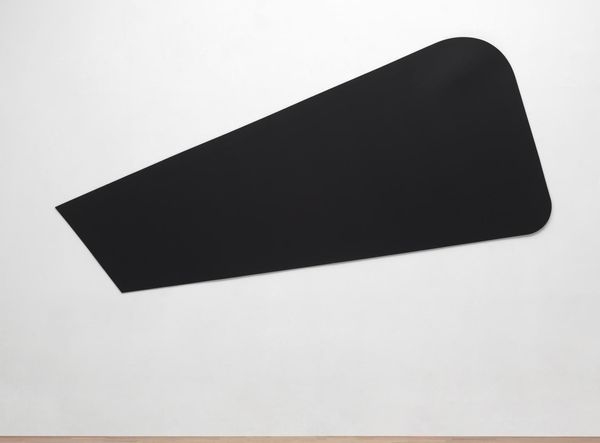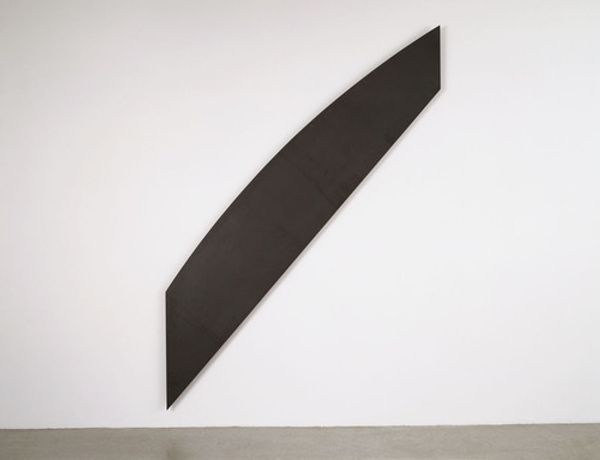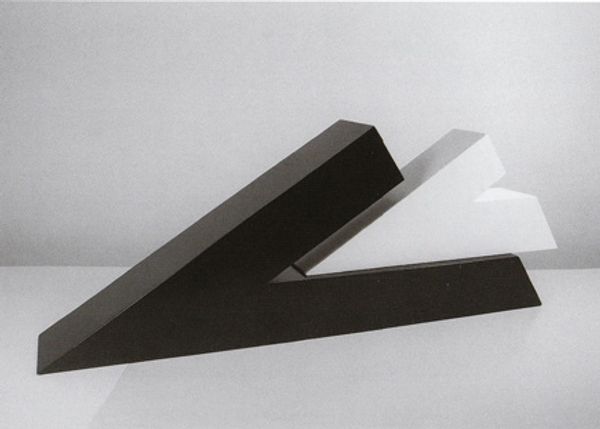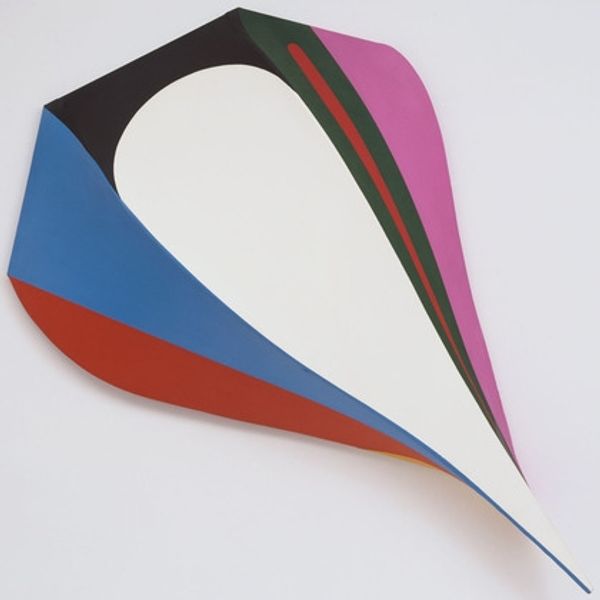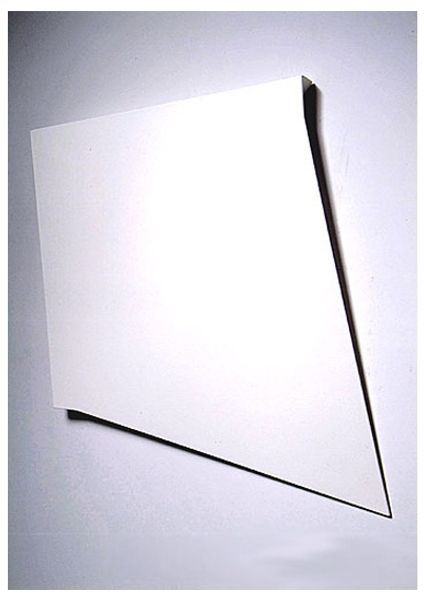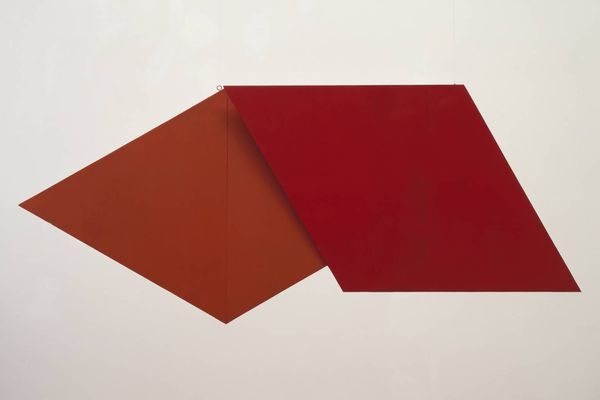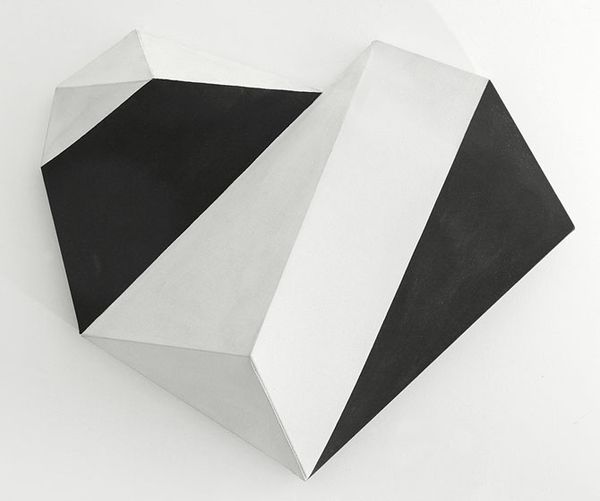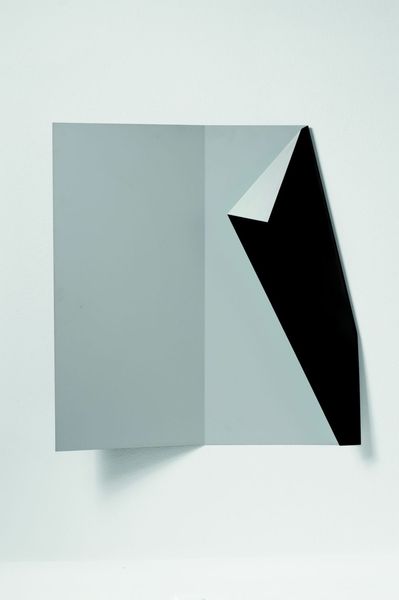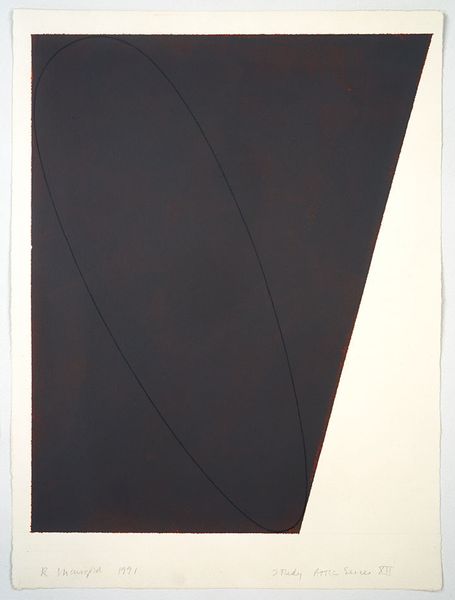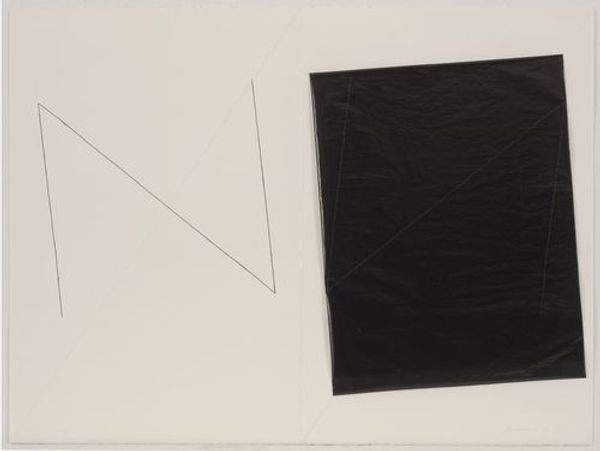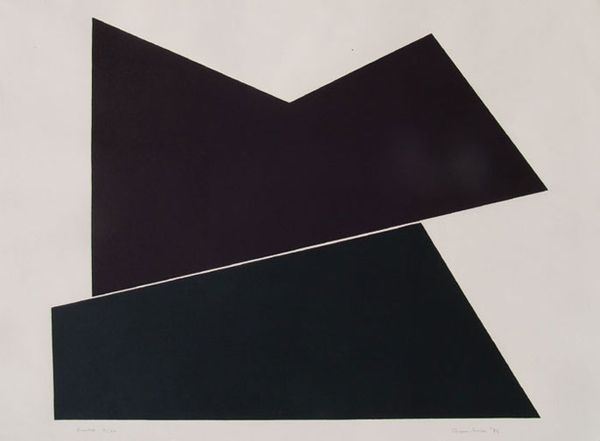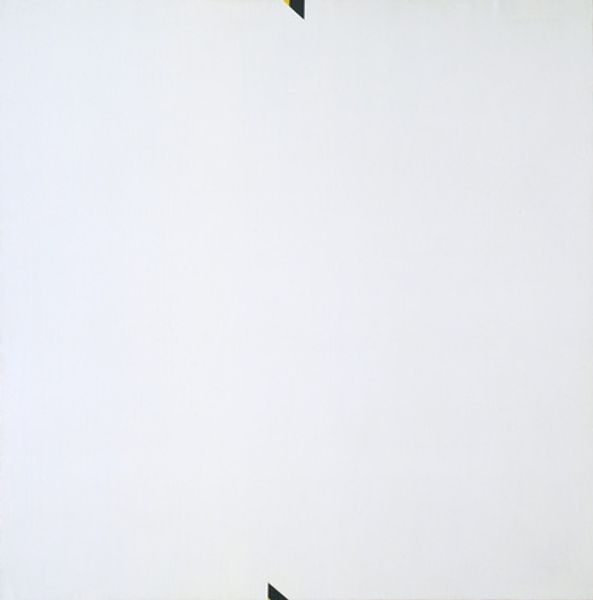
Dimensions: support: 1160 x 2140 x 57 mm
Copyright: © Trevor Bell | CC-BY-NC-ND 4.0 DEED, Photo: Tate
Curator: Here we have Trevor Bell's "Calshot," a striking abstract piece composed of black and white geometric forms. What are your initial thoughts? Editor: It feels like a landscape sliced and tilted, all stark contrasts. There's a tension between the black and white, like opposing forces in a social structure. Curator: Bell was deeply influenced by the landscape around him, particularly the coastlines. His use of geometric shapes to represent natural forms was quite radical. Editor: It makes me think about boundaries, about who gets to define the landscape and how its resources are divided. The black feels assertive, almost like a claim. Curator: And yet, the white is equally present, creating a sense of balance. Bell’s work often explored the relationship between form and color, pushing the boundaries of abstraction. Editor: Yes, it is an interesting exploration of balance and power. I find myself wondering about the socio-political context of its creation and how that influenced Bell’s vision. Curator: It's a powerful piece, inviting us to reconsider our relationship with the environment and the forces that shape it. Editor: Definitely a conversation starter about ownership, representation, and the delicate balance within our environment.
Comments
Join the conversation
Join millions of artists and users on Artera today and experience the ultimate creative platform.
tate 8 months ago
⋮
Calshot 1970 is a large painting in acrylic paint on two shaped canvases which together make a triangular form. Bell developed a painting practice that combined the formalist rigour of much abstract painting of the 1960s with references to external sources: landscape and nature, as well as personal experiences. Building on paintings inspired by, and evocative of, the Cornish coast and the Yorkshire Dales (see, for example, Forces 1962, Tate T13393), in the mid- and late 1960s he began to use shaped canvases and to make paintings that consisted of more than a single support.
